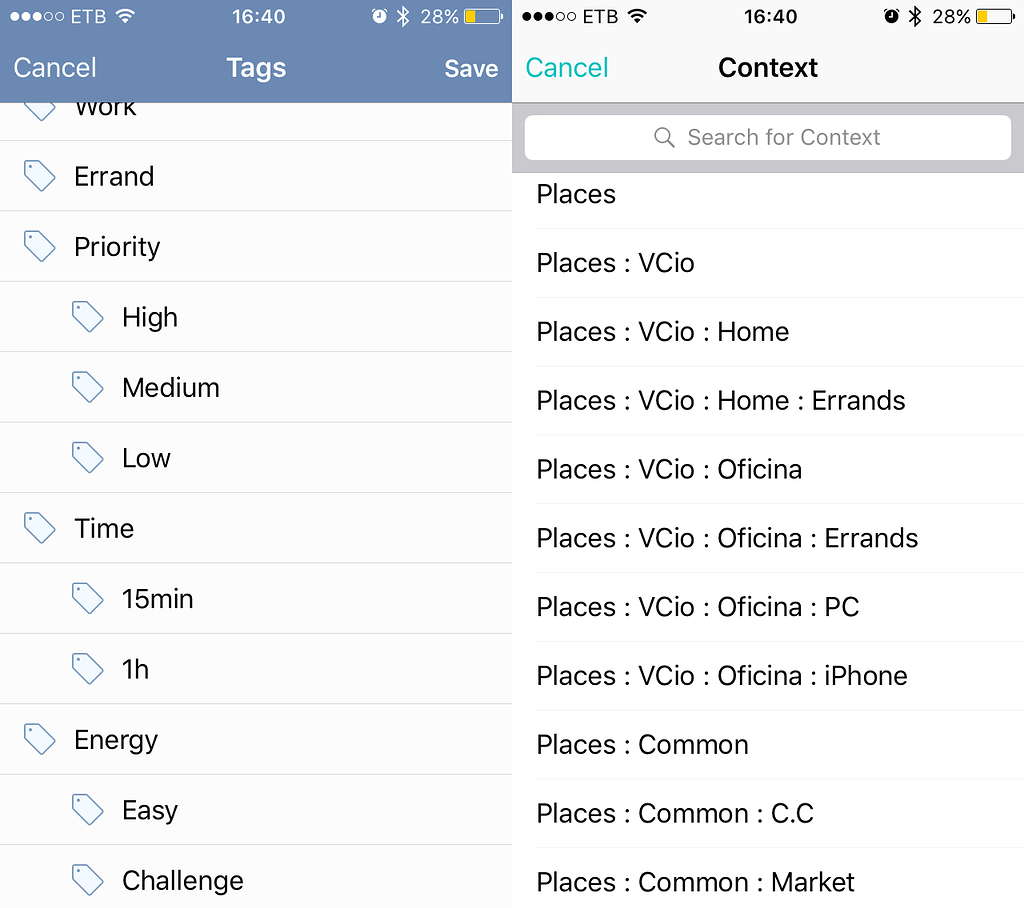

- #THINGS 3 VS OMNIFOCUS 2 VERIFICATION#
- #THINGS 3 VS OMNIFOCUS 2 SOFTWARE#
- #THINGS 3 VS OMNIFOCUS 2 ISO#
#THINGS 3 VS OMNIFOCUS 2 VERIFICATION#
It is sometimes said that validation can be expressed by the query "Are you building the right thing?" and verification by "Are you building it right?". This often involves acceptance of fitness for purpose with end users and other product stakeholders. It is a process of establishing evidence that provides a high degree of assurance that a product, service, or system accomplishes its intended requirements. Additional validation procedures also include those that are designed specifically to ensure that modifications made to an existing qualified development flow or verification flow will have the effect of producing a product, service, or system (or portion thereof, or set thereof) that meets the initial design requirements, specifications, and regulations these validations help to keep the flow qualified. A set of validation requirements (as defined by the user), specifications, and regulations may then be used as a basis for qualifying a development flow or verification flow for a product, service, or system (or portion thereof, or set thereof). For a new development flow or verification flow, validation procedures may involve modeling either flow and using simulations to predict faults or gaps that might lead to invalid or incomplete verification or development of a product, service, or system (or portion thereof, or set thereof). Validation is intended to ensure a product, service, or system (or portion thereof, or set thereof) results in a product, service, or system (or portion thereof, or set thereof) that meets the operational needs of the user. Verification can be in development, scale-up, or production. It is a process that is used to evaluate whether a product, service, or system complies with regulations, specifications, or conditions imposed at the start of a development phase. In the post-development phase, verification procedures involve regularly repeating tests devised specifically to ensure that the product, service, or system continues to meet the initial design requirements, specifications, and regulations as time progresses. In the development phase, verification procedures involve performing special tests to model or simulate a portion, or the entirety, of a product, service, or system, then performing a review or analysis of the modeling results. Verification is intended to check that a product, service, or system meets a set of design specifications. The evaluation of whether or not a product, service, or system complies with a regulation, requirement, specification, or imposed condition. It often involves acceptance and suitability with external customers.

The assurance that a product, service, or system meets the needs of the customer and other identified stakeholders. However, the PMBOK guide, a standard adopted by the Institute of Electrical and Electronic Engineers (IEEE), defines them as follows in its 4th edition: Sometimes they are even used interchangeably. In practice, as quality management terms, the definitions of verification and validation can be inconsistent. "Independent verification and validation" can be abbreviated as " IV&V". The words "verification" and "validation" are sometimes preceded with "independent", indicating that the verification and validation is to be performed by a disinterested third party.
#THINGS 3 VS OMNIFOCUS 2 ISO#
These are critical components of a quality management system such as ISO 9000. Verification and validation (also abbreviated as V&V) are independent procedures that are used together for checking that a product, service, or system meets requirements and specifications and that it fulfills its intended purpose.
#THINGS 3 VS OMNIFOCUS 2 SOFTWARE#
For the software activities, see software verification and validation.


 0 kommentar(er)
0 kommentar(er)
